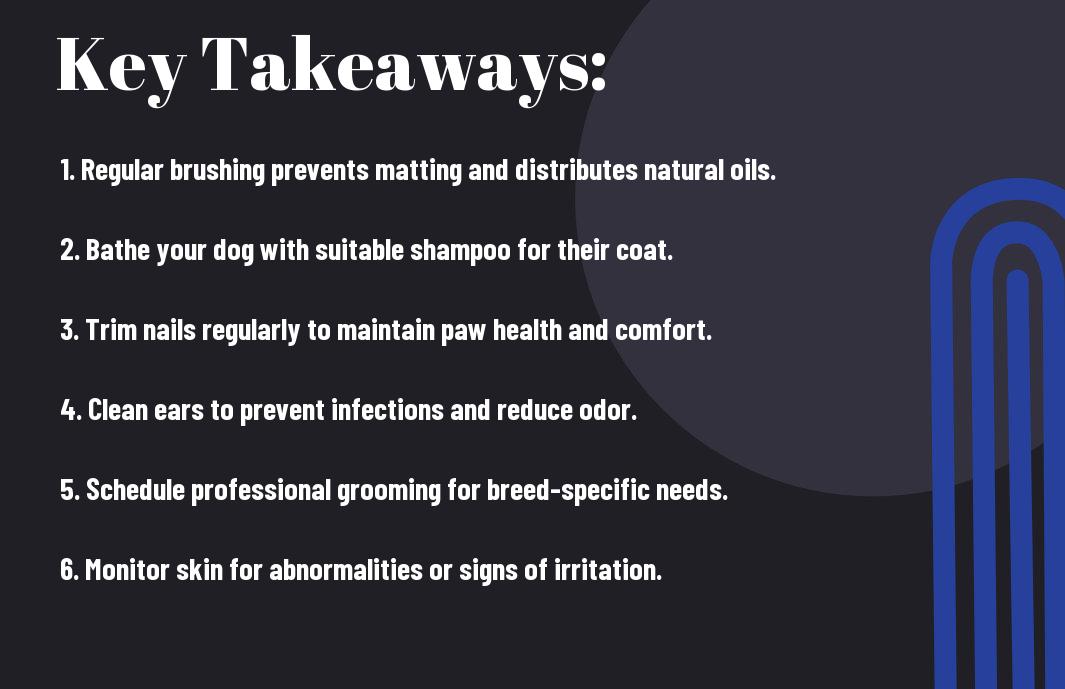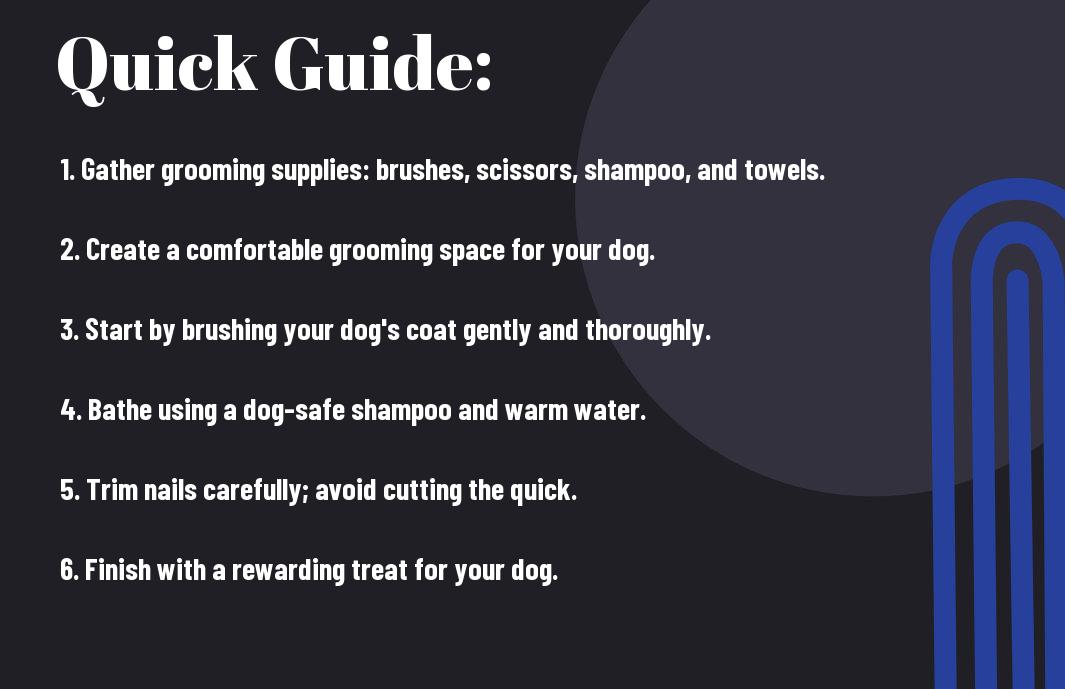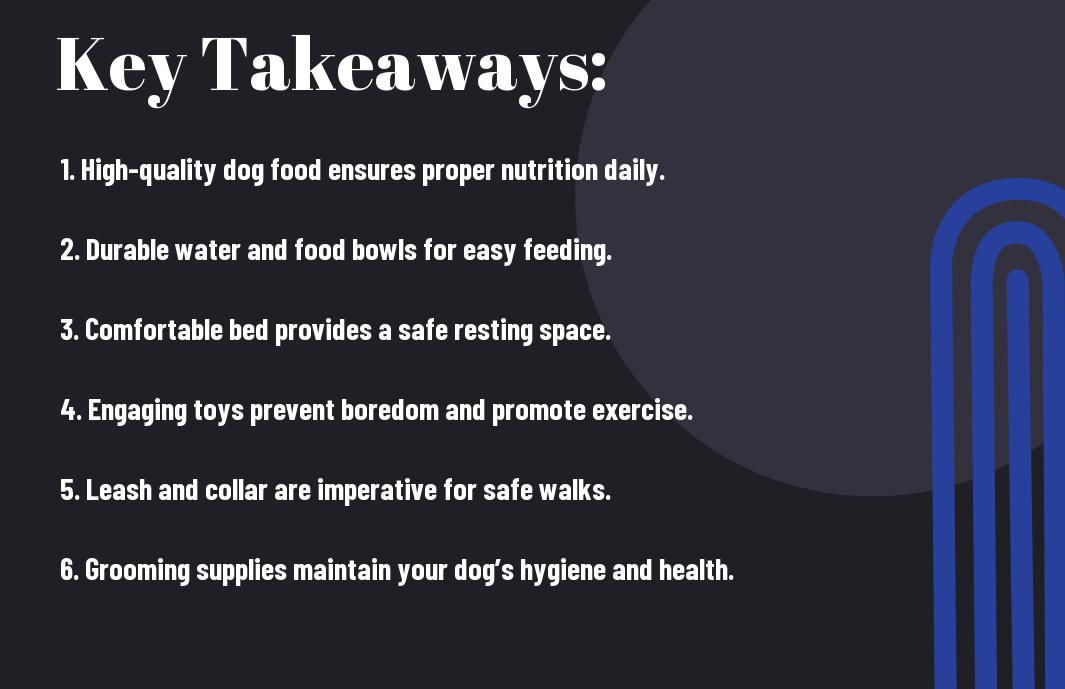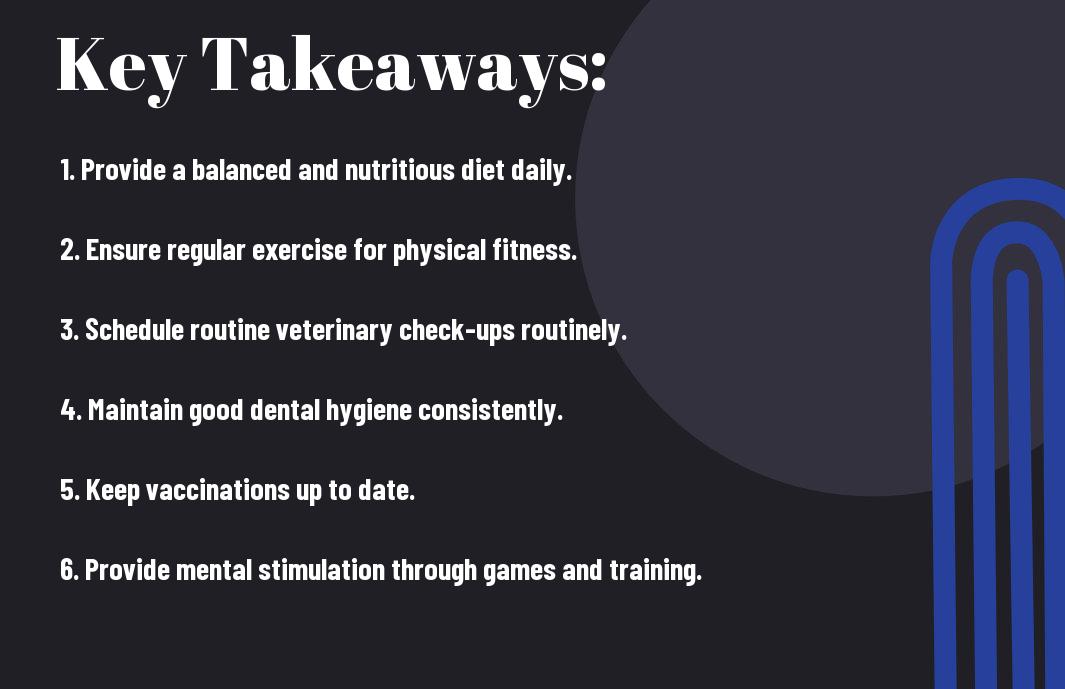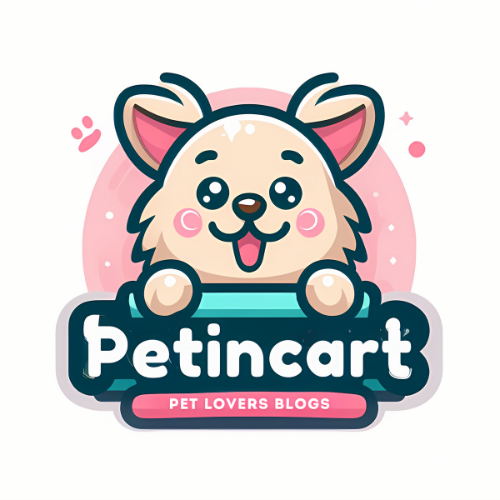Grooming your dog is more than just a routine; it’s an imperative part of maintaining their health and happiness. In this comprehensive guide, you’ll discover all the grooming imperatives you need to keep your furry friend looking and feeling their best. From tools to techniques, we’ll walk you through everything you need to create a paw-sitive grooming experience for your pet. Whether you’re a seasoned groomer or new to the process, this guide will equip you with the knowledge to ensure your dog’s coat, skin, and overall well-being are in top shape.
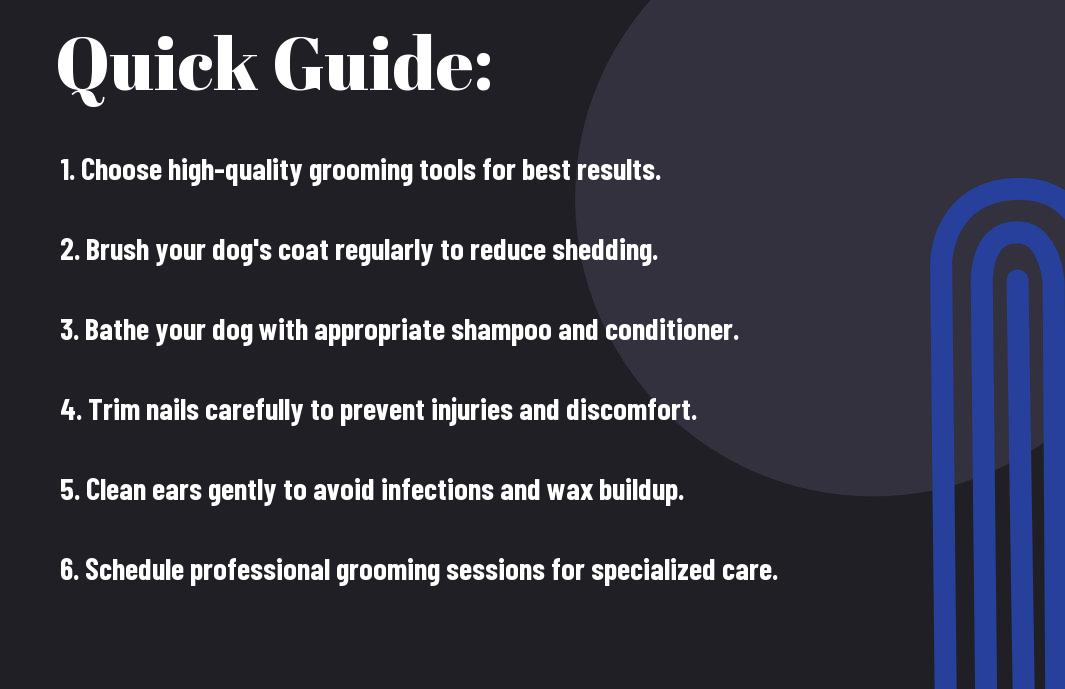
Understanding Dog Grooming Essentials
The dog grooming process can feel overwhelming, especially when trying to navigate the multitude of tools available on the market. To set you on the right path, it is imperative to understand the types of grooming tools that are best suited for your dog’s breed, coat type, and specific grooming needs. Each type of grooming tool serves a unique purpose, contributing to your dog’s overall health and appearance. Below is a breakdown of some common grooming tools that every dog owner should consider:
| Tool Type | Purpose |
| Brush | To remove loose fur and prevent mats |
| Comb | To detangle and smooth fur |
| Clipper | To trim and shape fur |
| Scissors | To trim difficult areas like around the eyes |
| Nail Clippers | To keep your dog’s nails at a healthy length |
Types of Grooming Tools
- Brushes that cater to various coat types, from slickers for long hair to bristle brushes for short hair.
- Combs that assist in detangling and can also help in finding any matting.
- Clippers that offer different blade sizes for versatile grooming options.
- Scissors for precision work, particularly in sensitive areas.
- Nail clippers or grinders that help maintain paw health.
The right combination of these grooming tools can make the grooming experience much more productive and enjoyable for both you and your dog. Familiarizing yourself with these tools means you’ll be better equipped to keep your furry friend’s coat in optimal condition, strengthening your bond through regular grooming sessions.
Factors to Consider When Choosing Tools
When deciding on grooming tools, several factors should guide your decisions to ensure optimal results tailored to your dog’s needs. Consider your dog’s coat type, size, and grooming history, as these elements will inform which tools are most effective for you. Additionally, you may want to assess your own grooming experience level, as some tools may require more expertise than others.
- The material and durability of the tools for longevity and ease of use.
- The specific grooming needs of your dog’s breed and coat type.
- Your comfort level with various tools to ensure you can groom effectively.
- The frequency of grooming required, as some tools are better for daily use than others.
- The budget you are comfortable working with, since tools can vary widely in price.
Tools that suit your dog’s grooming requirements will ultimately make the process smoother and less stressful. Investing in quality grooming tools tailored to your pet’s needs will lead you to better results, enhancing your dog’s well-being and appearance. Thou can find great options online or at local pet stores, often with guides available to help you make an informed choice for your beloved companion.
Step-by-Step Grooming Guide
One of the most effective ways to ensure a pleasant grooming experience for you and your dog is to follow a structured approach. The step-by-step grooming guide below outlines necessary techniques and methods that will help you maintain your dog’s coat, hygiene, and overall health. Each segment emphasizes a vital part of the grooming process, allowing you to provide your furry friend with the care they deserve.
| Grooming Step | Description |
|---|---|
| 1. Bathing | Prepare your dog for a bath and clean their coat thoroughly. |
| 2. Drying | Dry your dog’s coat while ensuring their skin remains healthy. |
| 3. Brushing | Remove loose fur and prevent matting. |
| 4. Nail Trimming | Keep your dog’s nails at a manageable length. |
| 5. Ear Cleaning | Ensure your dog’s ears are clean and free from debris. |
Bathing Techniques
Bathing your dog doesn’t have to be a daunting task. Start by gathering all necessary supplies, such as dog shampoo, towels, and a non-slip mat for safety. Wet your dog’s coat thoroughly with warm water, ensuring the water isn’t too hot or cold. Apply the shampoo, massaging it into your dog’s fur to create a lather. Be cautious around their eyes and ears, using a damp cloth to clean sensitive areas. Rinse thoroughly, ensuring no shampoo residue is left behind, as this can irritate your dog’s skin.
Drying and Brushing Methods
Step by step, drying your dog involves ensuring a gentle process that maintains the health of their coat. After the bath, use a towel to absorb excess water, especially in thick-furred dogs. If your dog is comfortable with it, a blow dryer on a low setting can expedite drying, but be careful to keep it at a distance to avoid overheating their skin. Once your dog is thoroughly dry, you can transition to brushing. Regular brushing removes mats, tangles, and loose hairs, plus it helps distribute natural oils throughout your dog’s coat, promoting a healthy shine.
This process not only leaves your dog looking great but also strengthens the bond between you two. With patience and practice, you can make grooming an enjoyable routine, ensuring your dog feels relaxed and secure throughout. By following these methods, you’ll help maintain your dog’s overall hygiene and comfort while preventing common grooming challenges.
Grooming Tips for Specific Dog Breeds
Your dog’s grooming needs can vary significantly based on their breed, and understanding these specific requirements can lead to a healthier and happier pet. Different breeds come with varied coat types and temperaments that necessitate tailored grooming routines. Here are some important tips you should consider to keep your furry friend looking their best:
- Research your dog breed’s unique coat type for better maintenance.
- Consult a professional groomer familiar with your dog’s breed.
- Establish a consistent grooming schedule based on shedding patterns.
- Invest in breed-specific grooming tools for optimal results.
Thou shalt pay attention to your dog’s specific grooming requirements to ensure they remain comfortable and content.
Long-Haired Breeds
An array of beautiful breeds such as the Shih Tzu, Afghan Hound, or Maltese falls into the long-haired category. These dogs require a dedicated grooming routine due to their flowing locks, which can easily tangle and mat if left unattended. To keep their coats lush and healthy, you should brush them daily with a slicker brush or comb, focusing particularly on high-friction areas like the ears and underbelly. Regular baths, using a gentle, breed-specific shampoo, will also help keep their coats clean and manageable.
Additionally, long-haired breeds benefit greatly from professional grooming every couple of months. This can include trimming and nail clipping, procedures that may be more easily handled by an experienced groomer. Using leave-in conditioner after baths can help reduce tangling and add moisture back to their fur, ensuring their coat remains vibrant and shining. Adopting these grooming habits will not only maintain your dog’s appearance but also contribute to their overall well-being.
Short-Haired Breeds
Clearly, short-haired breeds like Beagles, Boxers, and Bulldogs require a different grooming approach than their long-haired counterparts. While their grooming needs might seem minimal, regular brushing is still important for maintaining a healthy coat and reducing shedding. A rubber grooming mitt or soft brush can work wonders in removing loose hair and distributing skin oils for a natural shine. Routine bathing should also be scheduled, ideally once every few months, unless your dog gets particularly dirty due to playtime adventures.
Understanding your short-haired dog’s skin sensitivity is vital; opt for gentle shampoos that won’t irritate their skin. Regular nail trimming, ear cleaning, and dental care should also be part of your grooming routine to ensure overall health. These important steps can minimize skin problems and keep your dog looking and feeling fantastic, enhancing their well-being in the process. Thou can ensure your short-haired breed stays healthy and vibrant by mastering these fundamental grooming techniques.
Pros and Cons of Professional Grooming
After considering how often your dog requires grooming, you might be weighing the option of professional grooming services. There are numerous factors to dissect, including the advantages and disadvantages these services offer. Understanding both sides will better inform your decision and help you choose what’s best for you and your furry friend.
Pros and Cons of Professional Grooming
| Pros | Cons |
|---|---|
| Expert knowledge and skills | Cost can add up over time |
| Access to specialized tools | Travel may be required if services aren’t local |
| Reduction in health risks (e.g., matting) | Potential stress for anxious pets |
| Convenient scheduling options | Inconsistent styling if different groomers are used |
| Time-saving for busy owners | May not cater to personal grooming preferences |
Advantages of Professional Services
Services offered by professional groomers come with a wealth of benefits that can greatly enhance your dog’s grooming experience. Firstly, experienced groomers possess expert knowledge about different breeds and their specific grooming needs, ensuring your pet receives the best care possible. With access to specialized tools and products designed for various coat types, they can perform tasks that may be challenging for you to replicate at home, promoting your dog’s overall health and happiness.
Moreover, enlisting professional grooming can save you time in your busy schedule. You can book appointments that suit your lifestyle, allowing you more freedom to focus on other aspects of pet care while still ensuring your dog looks and feels their best. Additionally, professional groomers are trained to spot potential health issues like skin irritations or ear infections, making regular visits beneficial for preventive care.
Disadvantages and Considerations
There’s no denying that while professional grooming comes with many perks, it also has its drawbacks. One of the primary challenges you may face is the cost; regular grooming sessions can add up quickly. Furthermore, traveling to a grooming facility, especially if it’s not close by, can be inconvenient. Your dog might also experience anxiety during the grooming process, particularly if they are not accustomed to being handled by strangers.
With that in mind, it’s vital to assess your dog’s temperament and your budget before committing to professional grooming. If your pet tends to be nervous, you might want to ease them into it or consider mobile grooming services that provide a more familiar environment. Additionally, understanding what you expect from a groomer can help streamline your experience, ensuring that both you and your pet have a positive outcome when utilizing professional grooming services.

At-Home Grooming vs. Professional Grooming
Keep in mind that both at-home grooming and professional grooming have their unique benefits. When you choose to groom your dog at home, you have complete control over the entire process, from the products you use to the timing of the grooming sessions. This allows for a more personalized approach to your dog’s grooming needs, which may help you build a stronger bond with your furry friend. However, professional grooming can provide more comprehensive services, including specialized treatments and access to equipment you may not have at home. Ultimately, the choice between the two will depend on your specific requirements and your dog’s individual needs.
Costs and Accessibility
With at-home grooming, the initial investment is typically lower as you can gradually purchase the necessary grooming tools, such as brushes, shampoo, and nail clippers. You can spread the cost over time, making it easier on your budget. On the other hand, professional grooming sessions usually come with higher upfront costs, which can add up depending on the frequency of appointments and the specific services required. While accessibility can often be more straightforward with at-home grooming, finding a reliable groomer nearby can sometimes be challenging, leading to longer wait times for appointments.
Time and Effort Comparison
On the flip side, at-home grooming can be time-consuming and often requires a solid time commitment from you. You’ll need to dedicate time for each grooming session, which may take longer than expected, especially if your dog is not accustomed to the process. Professional groomers, however, can often trim, bathe, and style your dog in a fraction of the time due to their expertise and specialized tools. If you have a busy schedule, it may be more convenient to book regular appointments with a groomer.
Time and Effort Comparison
| At-Home Grooming | Professional Grooming |
|---|---|
| Requires significant time commitment | Typically quicker due to experience |
| Can be adjusted to fit your schedule | Set appointments can limit flexibility |
| May require learning and adaptation | Trained professionals handle all aspects |
A thorough understanding of the time and effort required for each grooming method is vital in making an informed choice. With at-home grooming, you’ll need to practice and invest time to become proficient, which may involve some trial and error. Professional groomers, on the other hand, come equipped with skills and tools that can benefit your dog, providing a more efficient grooming experience. Weighing these factors against your own schedule and level of comfort can help you determine the best grooming option for you and your pet.
Common Grooming Mistakes to Avoid
All pet owners make mistakes when it comes to grooming their dogs, often without realizing they are doing so. Understanding these common pitfalls is vital for maintaining your dog’s health and well-being. Being aware of common mistakes will help you enhance the grooming experience for both you and your dog. You want to ensure that your grooming routine is effective and pleasant for your furry friend, which requires avoiding a few common issues that can arise during grooming sessions.
Over-Grooming
Grooming your dog too frequently can lead to over-grooming, which can be harmful to their coat and skin. Each time you groom, you may strip away vital oils that maintain a healthy coat, leading to dry skin and irritations. While regular grooming is important for most breeds, you should adjust the frequency based on your dog’s specific needs. Pay attention to how your dog’s coat looks and feels; varying factors like season and activity level can dictate grooming requirements.
Neglecting Nail Care
Grooming also encompasses proper nail care, which is often overlooked. It’s important to keep your dog’s nails trimmed to prevent discomfort and potential injury. Long nails can cause problems when your dog walks or runs, leading to pain and mobility issues over time. You should regularly check your dog’s nails and trim them as needed to maintain their health and comfort.
A common misconception is that nail care is only necessary for certain breeds. However, all dogs, regardless of their size or activity level, can benefit from regular nail trimming. You may want to invest in quality nail clippers or consider scheduling a visit to a professional groomer if you are unsure about how to safely trim your dog’s nails. Proper nail care not only helps avoid physical discomfort but also reduces the chances of scratches and snags around your home.
Summing up
Now that you have explored ‘The Ultimate Guide To Dog Grooming Essentials’, you are better equipped to tackle the grooming needs of your beloved pet. With a well-rounded understanding of the right tools, techniques, and schedules, you can ensure that your dog not only looks great but also feels comfortable and healthy. Regular grooming can prevent many common health issues, enhance your dog’s coat condition, and strengthen the bond between you and your furry companion.
Equipped with the right knowledge, you can tailor your grooming routine to fit your dog’s specific needs—whether they have short, long, or curly coats. By prioritizing grooming as a regular part of your pet care routine, you provide a form of mental stimulation for your dog and promote a clean, happy environment in your home. You have the power to make grooming an enjoyable experience for both you and your dog, fostering a lifetime of well-being and companionship.
